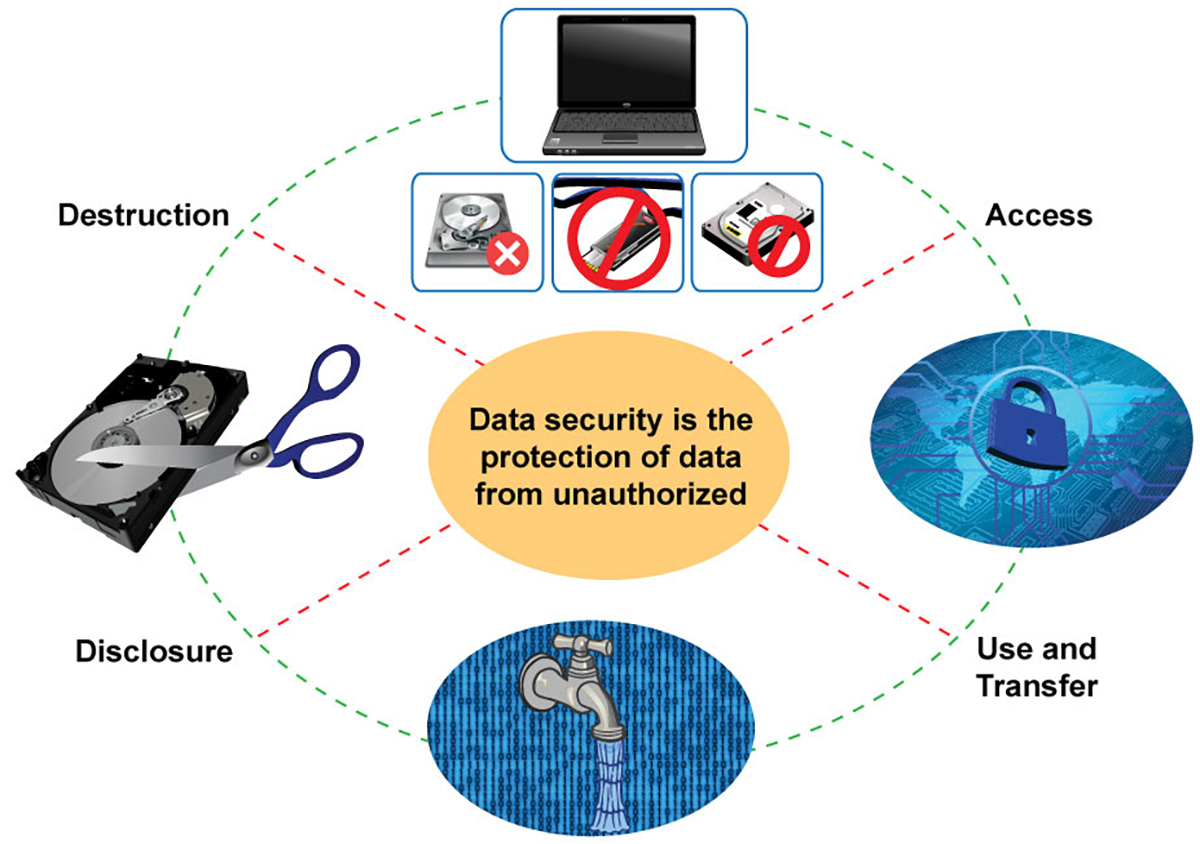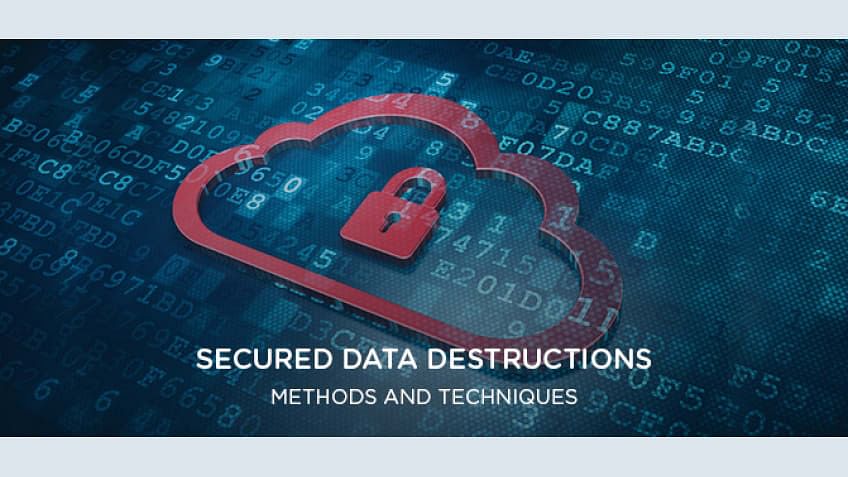How to Integrate Data Destruction Techniques right into Your Cyber Security Strategy
How to Integrate Data Destruction Techniques right into Your Cyber Security Strategy
Blog Article
Exploring the Relevance of Information Destruction in the Context of Computer Safety Solutions and Protecting Confidential Data
In a period where information breaches are significantly usual, the importance of efficient information destruction can not be overstated. What techniques can companies implement to boost their data devastation procedures?
Comprehending Data Destruction
Data damage is a vital part of computer protection that involves the long-term elimination of information from storage space gadgets to avoid unauthorized accessibility and prospective information breaches. In a progressively digital landscape, organizations face enhanced threats related to delicate information being improperly accessed or exploited. Effective data damage safeguards versus these risks, making sure that confidential dataâEUR" such as customer info, copyright, and monetary recordsâEUR" can not be recouped after disposal.
Recognizing the importance of data devastation extends beyond simple compliance with regulatory and lawful frameworks; it is important for keeping organizational honesty and count on. When data is improperly handled or improperly damaged, the repercussions can be severe, including monetary loss, reputational damage, and legal responsibilities.

Methods of Information Obliteration

One common approach is information cleaning, which involves overwriting existing information with arbitrary patterns multiple times. This method provides the original data irretrievable, making it a prominent choice for organizations looking for to safeguard secret information.
An additional technique is degaussing, which makes use of an effective magnetic area to disrupt the magnetic domains on storage space gadgets, properly eliminating the information. This method is specifically effective for magnetic media but is not suitable to solid-state drives.
Physical devastation is one more robust technique, including the shredding or crushing of storage space tools. This technique warranties that data healing is basically difficult, making it suitable for extremely sensitive details.
Finally, security can act as a corresponding strategy to data elimination. By securing data prior to removal, organizations can add an extra layer of security, guaranteeing that even if remnants are recouped, they remain unattainable without the decryption trick. Each method needs to be selected based on the level of information level of sensitivity and the details security demands of the organization.
Legal Compliance and Data Protection
Organizations must navigate an intricate landscape of legal demands associated with data protection, particularly after carrying out approaches of information removal. Various regulations, such as the General Data Security Policy (GDPR) and the Health And Wellness Insurance Coverage Transportability and Liability Act (HIPAA), impose strict standards on exactly how organizations must handle and dispose of sensitive information. Failure to abide by these policies can cause substantial lawful repercussions, including considerable penalties and reputational damage.
Data damage processes have to be meticulously recorded to demonstrate conformity with applicable legislations and requirements. This paperwork not just offers as evidence of adherence to lawful obligations however likewise illustrates a commitment to safeguarding delicate details. Organizations ought to likewise establish clear plans concerning data retention and damage timelines, making sure that information is not held longer than essential.

In article source addition, regular audits and evaluations of data damage methods are important to maintain conformity and adjust to developing lawful frameworks (data destruction). By proactively attending to lawful requirements, organizations can mitigate dangers linked with data breaches and demonstrate their commitment to information security. Ultimately, focusing on legal compliance in information damage procedures is not just a governing commitment, but an essential facet of a durable information security method
Effect on Service Track Record
The track record of a company can be considerably influenced by its method to data destruction and monitoring. In today's digital landscape, where data breaches can occur anytime, the failure to appropriately take care of delicate details can cause extreme repercussions. Organizations that inadequately handle information damage danger exposing confidential customer information, which not only breaches personal privacy legislations however also wears down count on among customers and stakeholders.
A ruined reputation can result in reduced consumer loyalty, as customers become hesitant to involve with a service that has actually shown carelessness in securing their information. Negative publicity bordering an information breach can have a long-term result, as possible clients might be hindered by the viewed lack of safety. This can bring about a straight decline in profits and market share.
Furthermore, organizations that prioritize information damage as component of their security technique can improve their credibility by showcasing their commitment to safeguarding delicate details. By embracing rigorous information monitoring techniques, companies can not only minimize dangers yet also position themselves as trustworthy entities in their particular sectors, thus enhancing their overall brand name image.

Best Practices for Secure Disposal
Executing finest practices for protected disposal of information is essential for minimizing dangers linked with information violations and guaranteeing conformity with personal privacy regulations. Organizations needs to take on an extensive data disposal policy that lays out procedures for both physical and digital information destruction.
For physical information storage space devices, such as hard disk drives, shredding or degaussing is recommended to stop data recovery. In addition, companies should maintain a chain of wardship documentation during the disposal procedure, making certain accountability and traceability of disposed products.
For electronic data, making use of software application that sticks to sector criteria for data cleaning is vital. This software must overwrite existing information multiple times, making recovery basically impossible. It is additionally essential to validate the performance of the data devastation procedure via audits or third-party analyses.
Educating workers on protected disposal practices includes another layer of safety, as human error can frequently bring about information exposure. Routinely upgrading and reviewing disposal policies makes sure placement with advancing regulations and technological improvements. By executing these finest techniques, companies can dramatically reduce the danger of unauthorized data gain access to and improve their overall information security method.
Verdict
To conclude, try this out information destruction is a fundamental element of computer system security services that makes certain the security of private information from unauthorized access. Implementing effective methods of information obliteration, article source sticking to legal conformity, and identifying the effect on organization credibility are vital parts of a detailed information protection method. By adopting ideal techniques for safe and secure disposal, organizations can cultivate count on with clients and secure delicate data, ultimately contributing to a much more secure electronic landscape.
In a period where information breaches are increasingly usual, the significance of reliable data damage can not be overemphasized.Information destruction is a vital component of computer system safety that entails the irreversible removal of information from storage space tools to protect against unauthorized gain access to and possible data violations. Organizations needs to likewise establish clear plans pertaining to data retention and destruction timelines, ensuring that data is not held longer than required.
By proactively attending to legal requirements, companies can reduce dangers connected with data breaches and demonstrate their commitment to data protection (data destruction). Inevitably, focusing on lawful compliance in data devastation procedures is not just a governing responsibility, however an essential element of a robust information protection method
Report this page